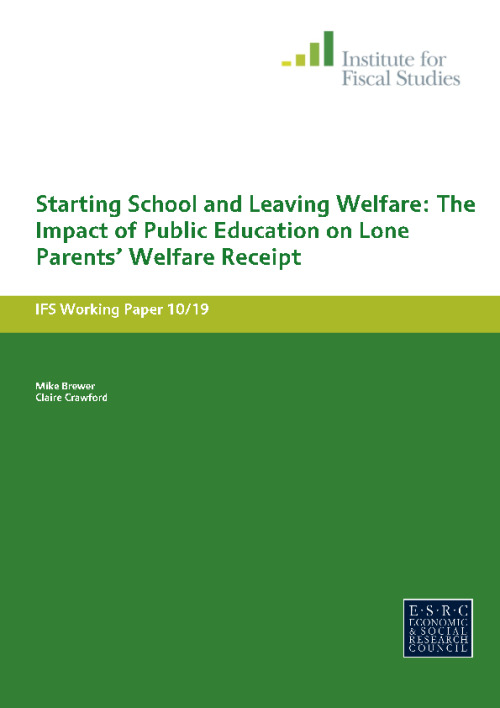<p><p><b>Please note:</b> This paper was updated on 26 October 2010.</p> <p>Childcare costs are often viewed as one of the biggest barriers to work, particularly among lone parents on low incomes. Children in England are eligible to attend free part-time nursery classes (equivalent to pre-kindergarten) from the academic term after they turn 3, and are typically eligible to start free fulltime public education on 1 September after they turn four. These rules mean that children born one day apart may start nursery classes up to four months apart, and may start school up to one year apart. We exploit these discontinuities to investigate the impact of a youngest child being eligible for part-time nursery education and full-time primary education on welfare receipt and employment patterns amongst lone parents receiving welfare. In contrast to previous studies, we are able to estimate the precise timing (relative to the date on which part-time or full-time education begins) of any impact on labour supply, by using rich administrative data. Amongst those receiving welfare when their youngest child is aged approximately three and a half, we find a small but significant effect of free full-time public education on both employment and welfare receipt (of around 2 percentage points, or 10-15 per cent), which peaks eight to nine months after the child becomes eligible (aged approximately 4 years and 9 months). We find weaker evidence of an even smaller effect of eligibility for part-time nursery education. This suggests that the expansion of public education programmes to younger disadvantaged children may only encourage a small number of low income lone parents to return to work (although, of course, this is not the primary aim of such programmes).</p></p>










